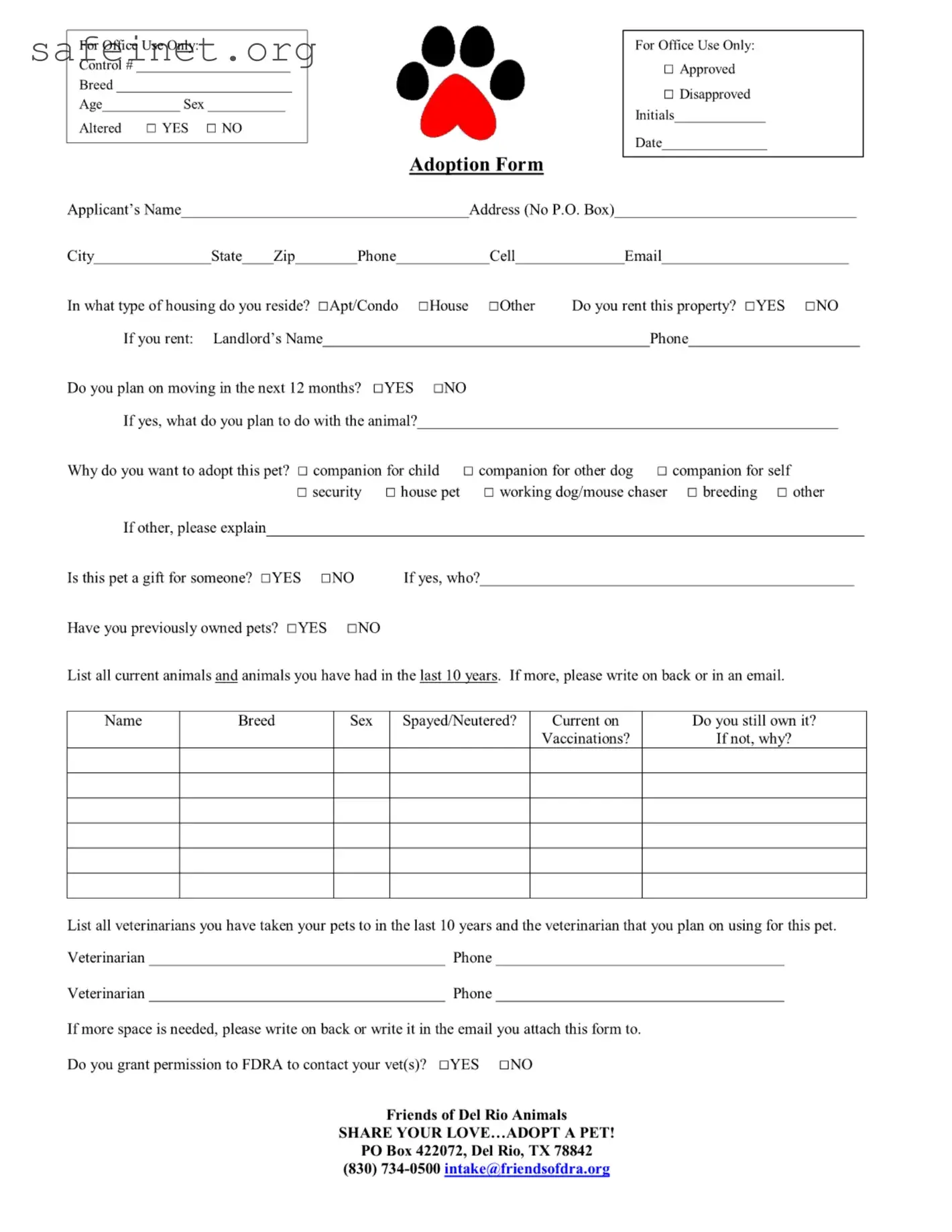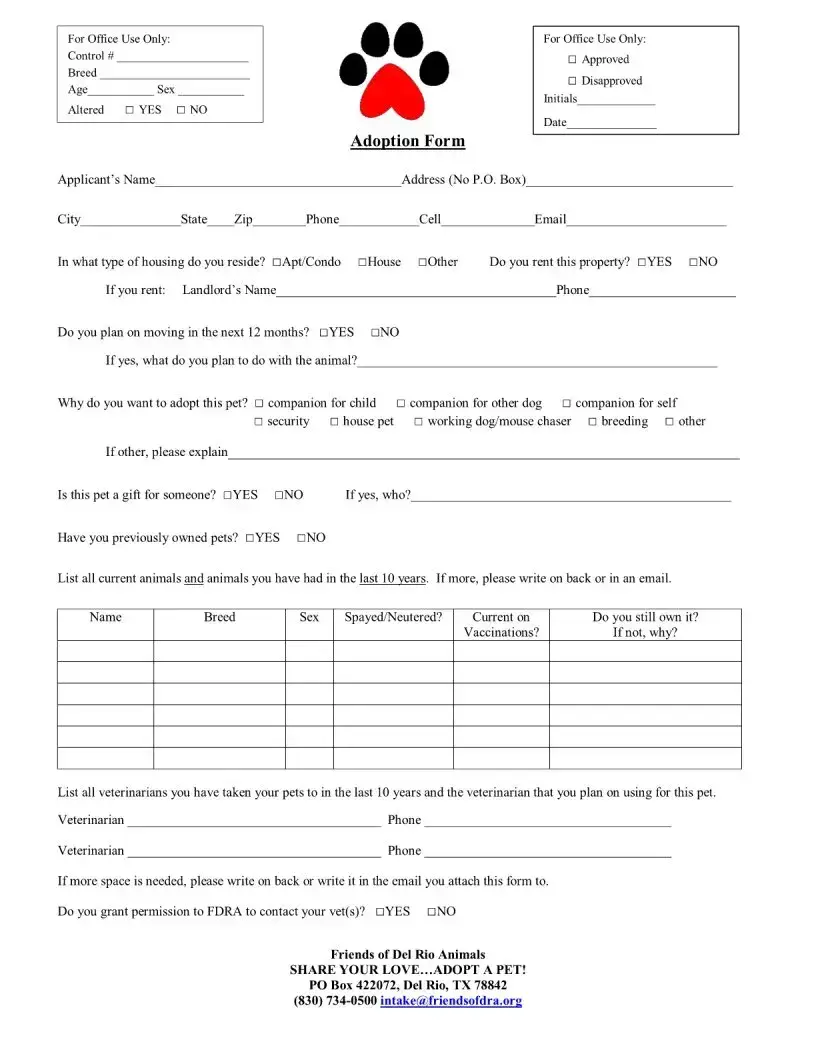The Dog Adoption Application form shares similarities with a rental application. Both documents require personal information regarding the applicant, including their name, address, and contact details. Just as landlords seek to understand if potential tenants have a stable housing situation, adoption agencies want to know whether the applicant owns or rents their home. Moreover, both forms often ask whether applicants have other occupants in their household—be it pets in the case of the adoption form or additional tenants for rentals. This information helps assess suitability and ensure the responsibilities tied to the application are comprehensively considered.
Another document that aligns with the Dog Adoption Application is a job application. Both forms require individuals to provide extensive details about their backgrounds. In a job application, a person shares their employment history, while the adoption application inquires about previous pet ownership. In both cases, the aim is to gauge the applicant's responsibilities and previous experiences. Additionally, both forms may ask for references; job applications typically request professional references, while adoption applications seek personal ones, offering insight into the applicant's character and lifestyle.
Furthermore, the Dog Adoption Application resembles a child adoption application. Both types of applications assess the applicant's living situation, parenting styles, and capability to provide care and love. Just as social workers evaluate a home for child adoption, animal shelters review the specifics of a household to ensure it is a suitable environment for a pet. Each application often necessitates a narrative about the motivations for wanting to adopt, placing exploration on emotional readiness and family dynamics at the forefront.
In addition, there exists a parallel between the Dog Adoption Application and an emergency contact form. Both documents require listing important details about individuals who can be contacted if necessary. The adoption form seeks references, while an emergency contact form requests backup contacts for personal safety. Each document emphasizes the importance of having support systems in place, whether it's for a pet's adoption approval or for an individual in critical situations.
The application also mirrors a medical history form found in healthcare settings. In both forms, an applicant shares pertinent information about prior experiences and current obligations. Just like a medical form might inquire about past health issues or allergies, the adoption application seeks to understand previous pet ownership and veterinary care, which speaks to the prospective owner’s preparation for bringing a new pet into their home.
Additionally, there are overlaps with a housing or home insurance application. Such applications often ask about pets and other household members, assessing risks and responsibilities that may affect coverage. Similarly, the Dog Adoption Application inquires about the applicant’s housing situation, any existing pets, and their financial ability to care for the new addition. Each form aims to assure that the pet’s new environment aligns with welfare guidelines and responsibilities inherent in both home insurance and pet ownership.
The similarities extend to a caregiving agreement form, where a person outlines their capability and intentions to care for another individual or entity. Much like a caregiving form details the caregiver’s experience and willingness to provide support, the adoption application requires potential owners to discuss their understanding of pet care and training methodologies. Both types of forms aim to confirm the applicant’s readiness to undertake the responsibilities that come with care and companionship.
Finally, the Dog Adoption Application bears resemblance to a volunteer application for animal shelters. Each form provides a detailed look at the applicant's history with animals, whether through ownership or volunteering. Furthermore, both applications assess the applicant's willingness to commit to responsibility and care; individuals applying to volunteer must demonstrate empathy and understanding, similar to those wishing to adopt a pet. In both cases, the aim is to ensure that animals are met with compassion, safety, and dedicated stewardship.


